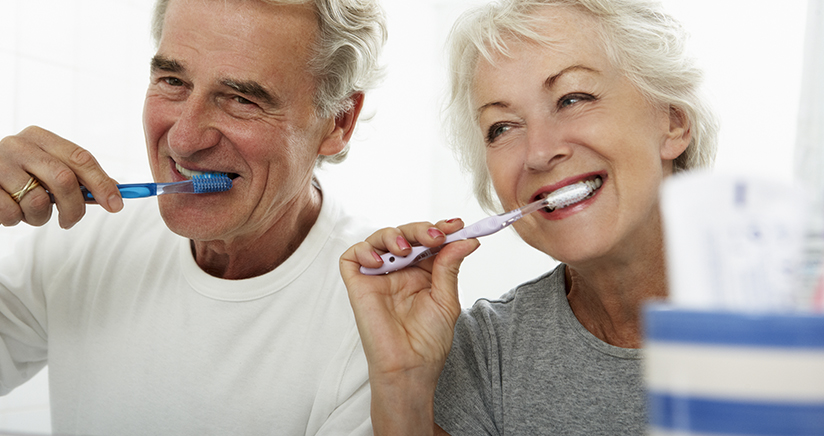Good oral care is not a luxury—it’s a necessity. Healthy teeth and gums not only allow you to chew and speak properly, they also help prevent disease. Keeping your mouth healthy isn’t difficult, but it does require some effort on your part. The following tips will help you develop an effective home oral care routine:
Use a soft-bristle, adult-size toothbrush
- Soft bristles are gentle on your teeth and gums. They’re more effective at removing plaque because they’re less abrasive, so you’re less prone to gum recession when you use them.
- Adult-size is essential for brushing every part of your mouth effectively, including the back molars where most plaque hides! The recommended size is between 4 and 6 inches long (10 cm – 15 cm). Longer than that, and the handle can actually make it difficult to get into all those hard-to-reach spots in your mouth like under your tongue or along the gumline.
Hold your toothbrush firmly, but not so tightly that you can’t rotate it.
Hold your toothbrush firmly, but not so tightly that you can’t rotate it. If you hold the toothbrush too tightly, it will be difficult to get it in between your teeth and along the gum line. However, if you hold it too loosely, the bristles may bend out of shape and they will become ineffective against plaque build-up.
Place your toothbrush at a 45-degree angle against the gums and move in small circular motions.
To brush your teeth, place your toothbrush at a 45-degree angle against the gums and move in small circular motions. The goal is to have an even coating of fluoride toothpaste on all surfaces of each tooth. After you’ve brushed for 2 to 3 minutes, spit out the excess water and turn off the faucet with your non-toothbrush hand (no splashing!).
Flossing is another way to remove bacteria from between your teeth that brushing can’t always reach. Flossing should be done once per day, preferably when you are done brushing. Take about 18 inches of floss and wrap it around one of your middle fingers; keep this finger straight down as you pull off about an inch or two of floss between two teeth by rotating or “sawing” back and forth gently until there’s not much left between them; repeat until all surfaces are covered.
Flossing removes plaque from between teeth where a toothbrush can’t reach.
Flossing is another important habit that you should start early in life. Flossing removes plaque from between teeth where a toothbrush can’t reach. If plaque is not removed, it can harden into calculus (tartar). Do not use floss until your gums have been receding for at least 2 months and then only when recommended by your dentist or periodontist.
Floss gently but firmly down to the gum line between each tooth in a back-and-forth motion.
Flossing is an essential part of your oral care regimen. It removes plaque and food particles from between the teeth and along the gum line, reducing your risk of tooth decay and gum disease. Flossing should be performed daily, before brushing your teeth.
To floss correctly, take about 18 inches of floss at a time in each hand and wrap it around one finger (this will keep the floss straight so it will go easily between the teeth). Gently insert the floss into one space between two teeth using a back-and-forth motion. Continue doing this as you move down to each subsequent space until you reach your gum line (where you cannot see any more spaces).
A good oral care routine is key to maintaining healthy teeth and gums at home.
A good oral care routine is key to maintaining healthy teeth and gums at home. Your dentist will recommend brushing twice a day, but you should brush after every meal if possible.
Brush your teeth for at least two minutes each time (a stopwatch can help). Brush all surfaces of both upper and lower teeth, including the chewing surfaces and places where there are gaps between your teeth. Use an effective toothpaste that contains fluoride; it helps prevent cavities!
Floss daily to remove plaque from between the teeth that you cannot reach with a toothbrush. Use floss sticks or waxed floss, whichever fits your needs best.
You should floss daily and brush twice a day. The best way to prevent gum disease is to take care of your teeth and gums by brushing and flossing regularly.
The team at Village Periodontics & Dental Implant Center is a passionate and caring group that seeks to meet each of your dental needs. Make your appointment today and receive the quality care your teeth deserve.

